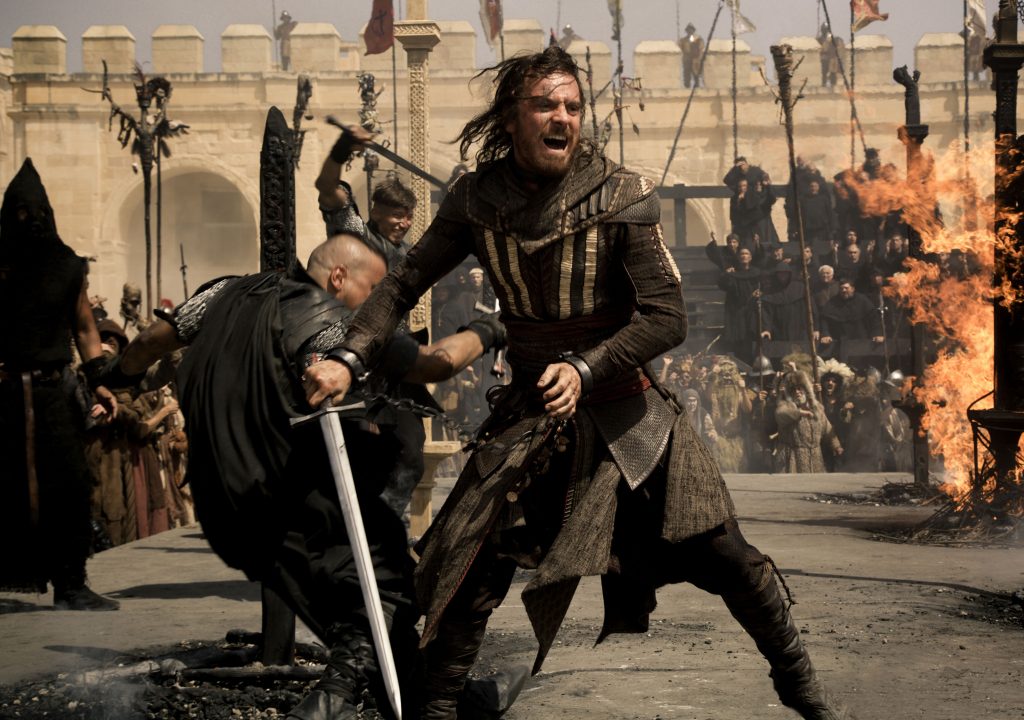Chris Tellefsen, ACE, has more than 30 credits as an editor, including The People vs. Larry Flynt, Flirting with Disaster, Analyze This, The Village, Capote, Moneyball (which earned him an Oscar nomination), Joy and the film I called to talk to him about: Assassin’s Creed.
HULLFISH: Early in your career you were an assistant of Thelma Schoonmaker.
TELLEFSEN: That was my earliest big movie job.
HULLFISH: What did you learn from her?
TELLEFSEN: That was on The Color of Money. I was the third assistant. It was 1986, and it was fascinating to watch the progress of the cut from version to version – to see the evolution of it. Thelma has a wonderful sense of rhythm and an incredible work ethic and those are things I wanted to absorb as much as I could. Marty was starting to seriously collect films at that time and the films that he was collecting would pass through the cutting room. A memorable moment was seeing a fresh silver print of Fellini’s,8-1/2, so beautiful it looked as it did the day it was shot. Right now he probably has the most incredible collection in conjunction with the Museum of Modern Art, which was housing his films. I can’t imagine how large the achieve is by now. That was thirty years ago.
HULLFISH: He’s a real connoisseur of the history of cinema.
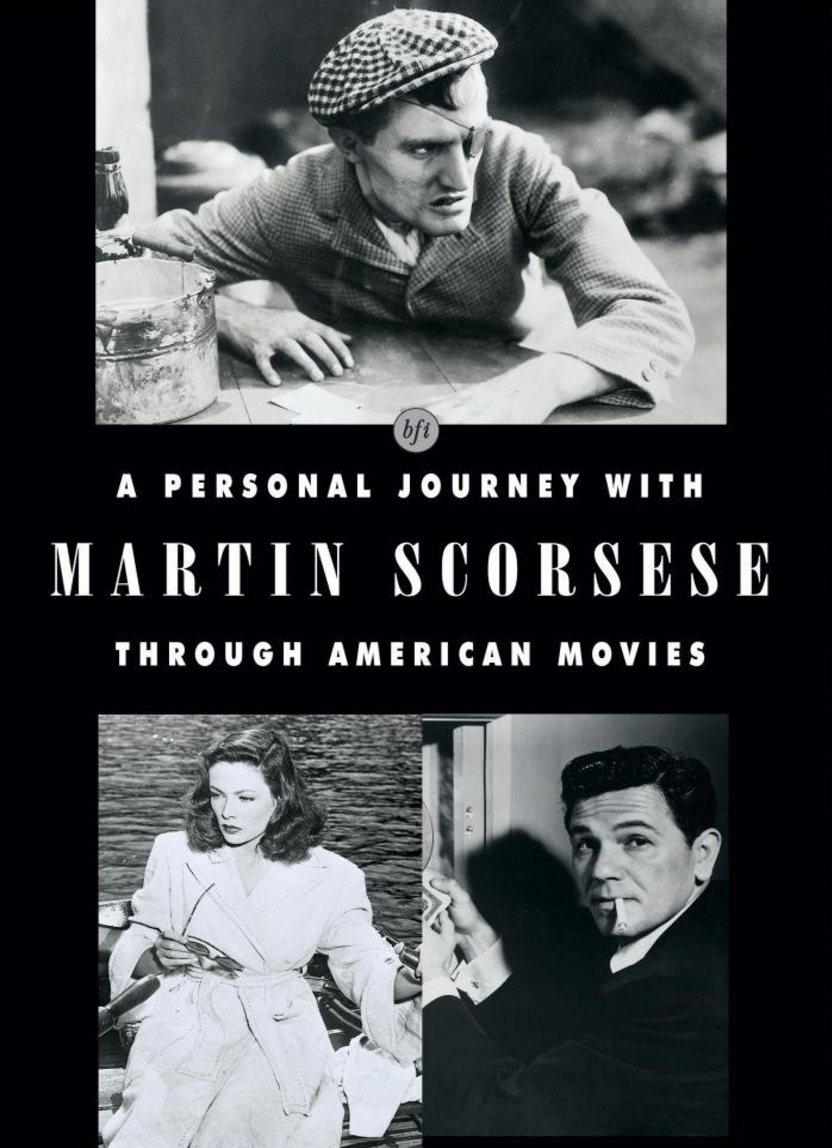 TELLEFSEN: There’s a wonderful documentary, A Personal Journey with Martin Scorsese Through American Movies, from ’95, which is essential viewing.
TELLEFSEN: There’s a wonderful documentary, A Personal Journey with Martin Scorsese Through American Movies, from ’95, which is essential viewing.
HULLFISH: I recently bought that. It’s a great 3 DVD set. You’ve worked with Milos Forman a couple of times, right?
TELLEFSEN: Yes, I did The People vs. Larry Flint and Man on the Moon. TPVLF was my first studio movie. Forman was interested in me as editor after seeing Kids. Milos is difficult and gruff, but it was cool. He hadn’t made a film in 7 years at that point, and the one before it was Valmont. He was not familiar with digital technology and we weren’t going to cut on film, but he was adamant that he wanted something that would replicate the feeling of the KEM. The KEM flatbeds had three heads and he always shot with multiple cameras. He wanted something that could accommodate multiple cameras, so we had to do some research because Avid didn’t have a tried and true version of multicam at that point. We used something called HeavyWorks, which was an extension of LightWorks that could accommodate multiple cameras. He hated the image. The digital image was pretty weak at the time. Now the image looks great, but it looked lame back then, and he would bitch about it all the time, saying that we should go back to film. I had this one scene early in the shoot where I had the time to play around. I did about 3 or 4 versions of it and showed it to him, and he said: “Oh I like this aspect of digital editing, but I want you to try about 10 versions”. I started heavily experimenting with each scene while they were shooting, but then when shooting was over and he took a little break we began to work together. We started around 9:30 in the morning and ended at 11:00 at night, working practically without a break. My lunch was behind me at 2:30, and I never witnessed him ingesting any food during the day. He just smoked cigars and drank espresso. I think he had a heavy meal at probably midnight. He had good editing instincts, so the collaboration was interesting and intense.
HULLFISH: You mentioned the film that kind of prompted him to work with you. What, exactly, was it that he saw in your previous work that he felt that he wanted to work with you?
TELLEFSEN: Are you familiar with the film, Kids?
HULLFISH: No, I’m sorry.
https://www.youtube.com/watch?v=U9a5tZSKDOU
TELLEFSEN: Oh. You should see it. The director was Larry Clark a photographer who was making his first film. It was a highly controversial film in 1995. It’s interesting that you don’t know about it because it’s quite well known. Kids is a very aggressive story of youth. Are you familiar with the photography of Larry Clark and his books like “Tulsa” and “Teenage Lust” and “A Perfect Childhood”?
HULLFISH: Sorry. Again, no.
TELLEFSEN: He was a highly influential photographer that I admired, and I’ve always thought his work was amazing. He was a photographer as participant and not just observer. He took controversial pictures of sexuality and drugs that were very close and violent. When I say “close,” I mean not at arms-length. The photographer was involved.
HULLFISH: I didn’t see the film, but the photographer, the controversy around these photographs, and the intensity of them, and the closeness of them is something that I know that I’ve had discussions about.
TELLEFSEN: Well, the thing with Kids – Larry wanted to make the ultimate teen movie. He got to know young skateboarders in Washington Square Park by photographing them and spending almost three years immersing himself in this world. That is how he met Harmony Korine(writer of Kids) who I’ve also worked with. I edited his film, Gummo. Are you familiar with the film Gummo?
HULLFISH: No. Sorry.
https://www.youtube.com/watch?v=gtY_545-ST8
TELLEFSEN: Well Gummo is an extremely experimental film and that’s actually closer, in terms of style, to where I came from, a more art background. But Harmony wrote the script for Kids. He was a 19-year old kid from Nashville who was very into movies and was going to NYU Film School at the time, but also was a skater and hung out in the park where he met Larry just by chance. Larry was looking for a writer, especially someone with a youthful point of view. Larry told him the general plot of what he wanted to do and Harmony wrote the script in a few weeks. Larry got the money to make the film, and I edited the film. It’s really something you should see. It’s actually an important film, but it was Milos that was very struck by it. He thought it was really interesting, and he liked the aggressive aspect of my editing. Larry and I were both influenced by John Cassavetes, and we talked about that a lot. And there was this particular movie, The Killing of a Chinese Bookie, which has a lot of this kind of clashing cuts where the edits really kind of go against one another. That was something that was constantly looked for, this kind of clash. We would call it a “bookie cut”, a violent clash of two pieces of film smashing together. This style impressed Milos and was why he was interested in working with me.
HULLFISH: That’s actually something Thelma Schoonmaker talked about: that she feels like a lot of Hollywood editors try to make edits too smooth and that there are places where you really want these bold statements in an edit.
TELLEFSEN: Oh, absolutely. Thelma’s the queen of it. My God, Raging Bull and all the way down the line, she looks for those heightened kinds of energies.

HULLFISH: Let’s talk a little bit about Assassin’s Creed. One of the first things I noticed and wanted to talk to you about was the “death sentence” montage. Tell me a little bit about that montage and was it always meant to be a montage? Had it previously been multiple scenes?
TELLEFSEN: It wasn’t written as a montage, no. But it was something that grew and changed. There were about 60 versions of that. It morphed quite a bit. The specifics of the final version was to fold the memory of his mother into it.
HULLFISH: What were some of the reasons why it morphed? Why did you feel you needed to include the memory of his mother into that montage? What were some of the thought processes in creating that montage and revising it?
TELLEFSEN: Well, in the arc of the character, the idea was that witnessing his mother’s death was a life-changing event in his existence. We finally moved away from the violence of it and emphasized the tenderness of his memory. The hope was to humanize him as an adult.
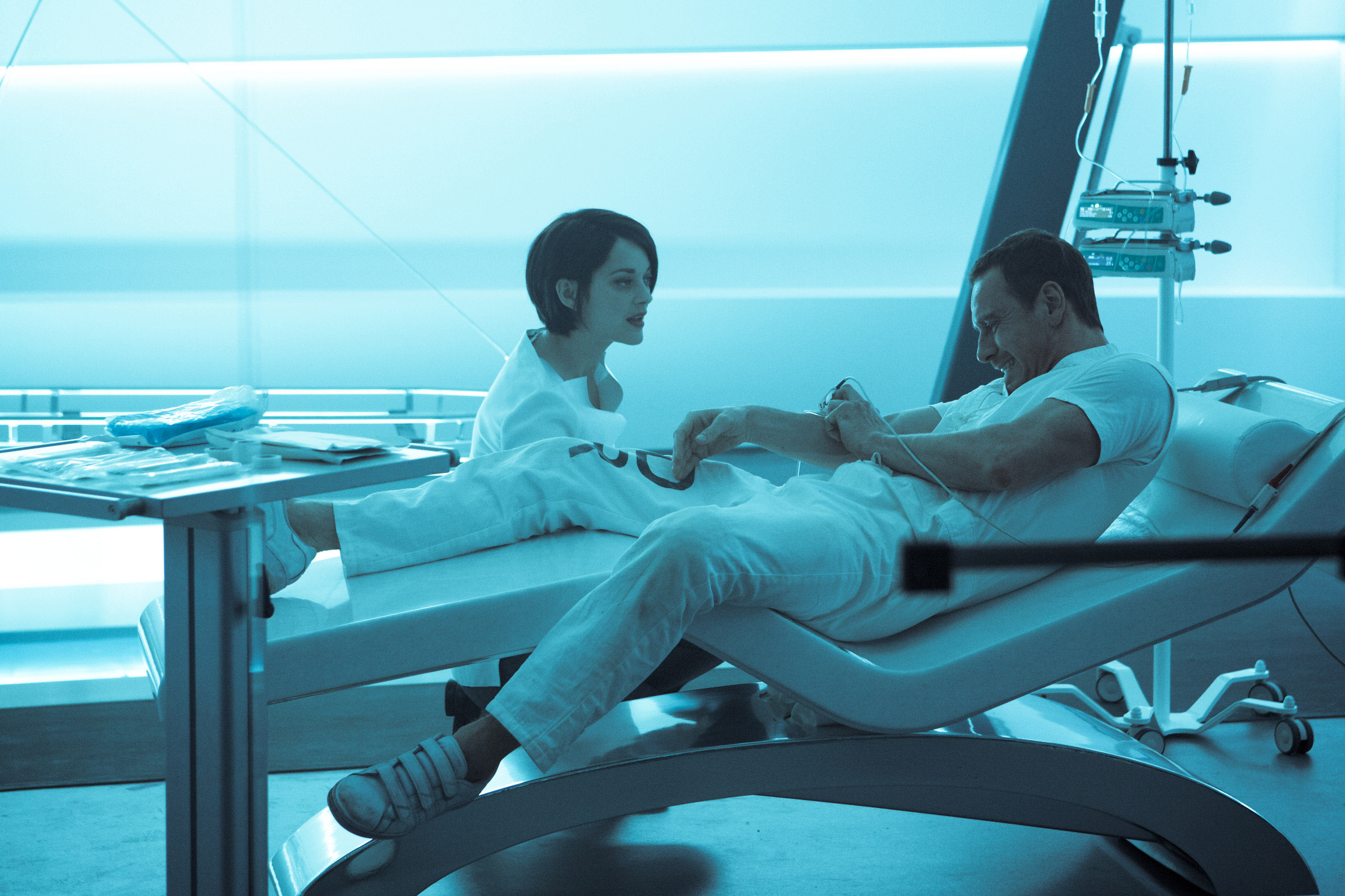
HULLFISH: The death of his mother is a very early scene in the movie.
TELLEFSEN: Yes. Actually, the initiation scene in the past was in a different place and we moved it to the beginning to contextualize the film, that it was going to be involving time travel, also to see Michael in the 15th century.
HULLFISH: Then you used the eagles as a methodology to get yourself from one spot to another?
TELLEFSEN: The eagle was very much written into the piece. The eagle is part of the game too. So it’s something that was integral.
HULLFISH: Did you feel a need to play the game before you edited the film?
TELLEFSEN: I am not a gamer, but I immersed myself in the visual aspects of the game.
HULLFISH: Can you remember anything else in that “Death Sentence” montage? What were the failures of some of the early variations or the things you felt needed?
TELLEFSEN: Well, we didn’t want it to be simply abstract. Many of the iterations were totally abstract and very much about light and rhythm and the shape. The organic shapes that are then used to bring him into the past through the machine – the animus – which were organic images based in reality that were created by the artist Chris Parkes – these rhythmic pulsing, almost DNA-like images that we wished to use as the conduit into going from the present to the past.
HULLFISH: In the montage, if I remember correctly you still had a lot of that very organic-looking stuff, just lights, and forms.
TELLEFSEN: Mixed with light, clouds, air, mountains and travel.
HULLFISH: The pacing of action scenes compared to the different pacing of the scenes around them was very deliberate. So you’ve got a scene that is very intense – very fast and then you sit, you give the audience a chance to breathe and for people to consider emotions. Talk to me a little bit about making sure of that pacing when you’re cutting during production. When you’re keeping up with production, you don’t have the context of the fast scene next to the slow scene until you need to kind of put them together.
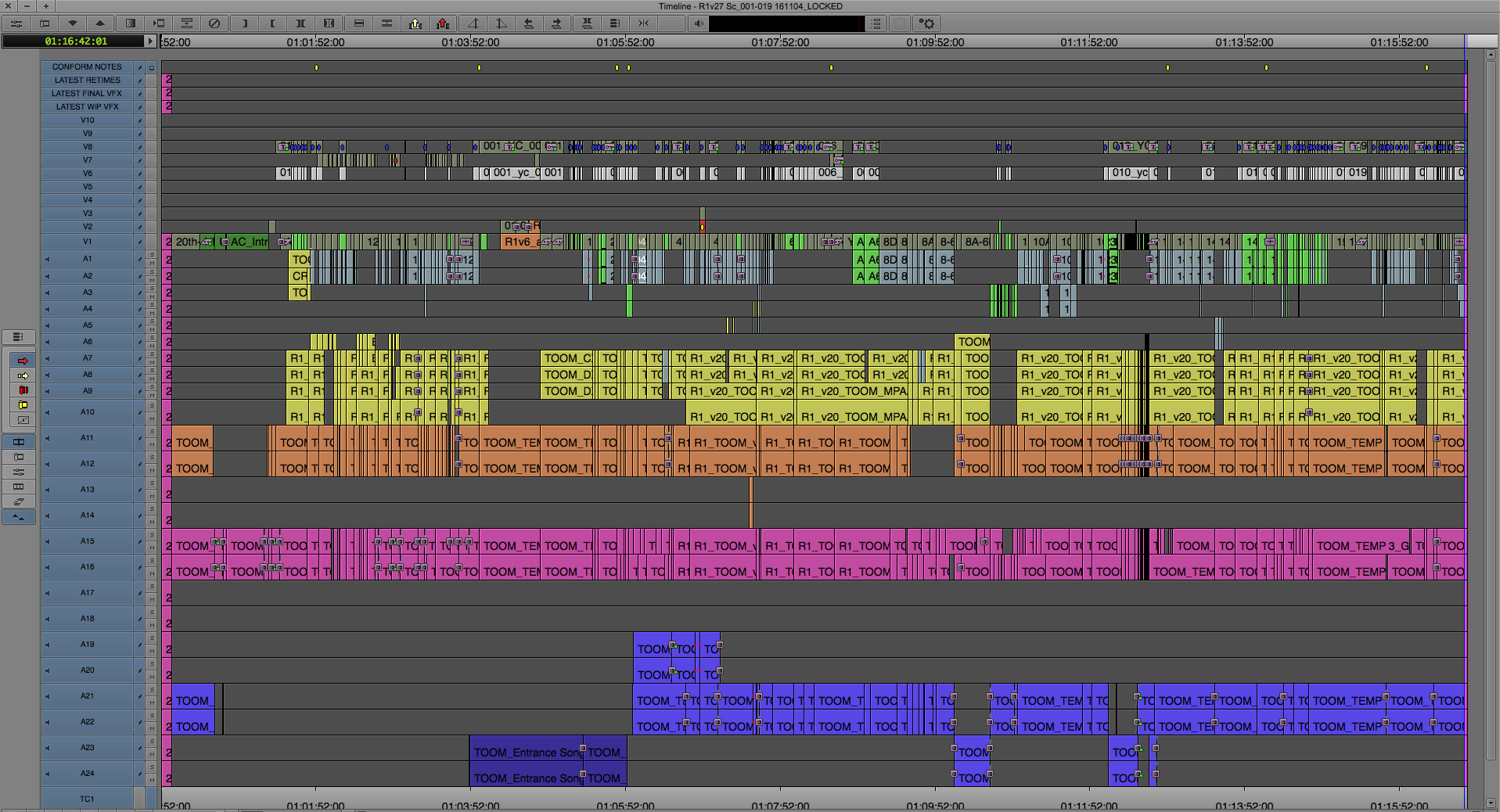
TELLEFSEN: Well, yes and no, because I can read certain aspects of rhythm into the script. You’re an editor. You understand. It’s a constant flow of figuring it, and once you start the confluence of scenes – once you start moving them around – once you start really feeling them, and finding out where the pulse is – where the emphasis must be, and where it really starts to sing. One thing we tried hard to do was to make it a visceral experience, and within that visceral experience, have focused on aspects of story. It’s much more of this man’s arc of going from completely confused about why he is a violent person, to finding his true nature as an assassin, and the fact that he is part of a tribe and he is not alone.
HULLFISH: As you put together an assembly and as the scenes go together you begin to see the pacing of the overall movie in addition to the pacing of the individual scenes.
TELLEFSEN: And the overall pacing has hills and valleys and dips and stretches. The main thing is, I want that essence of leaning forward. I want the audience member to strain slightly and then be brought forward into something.
HULLFISH: To keep the audience engaged? Is that the reasoning?
TELLEFSEN: Yes. Absolutely, at all times.
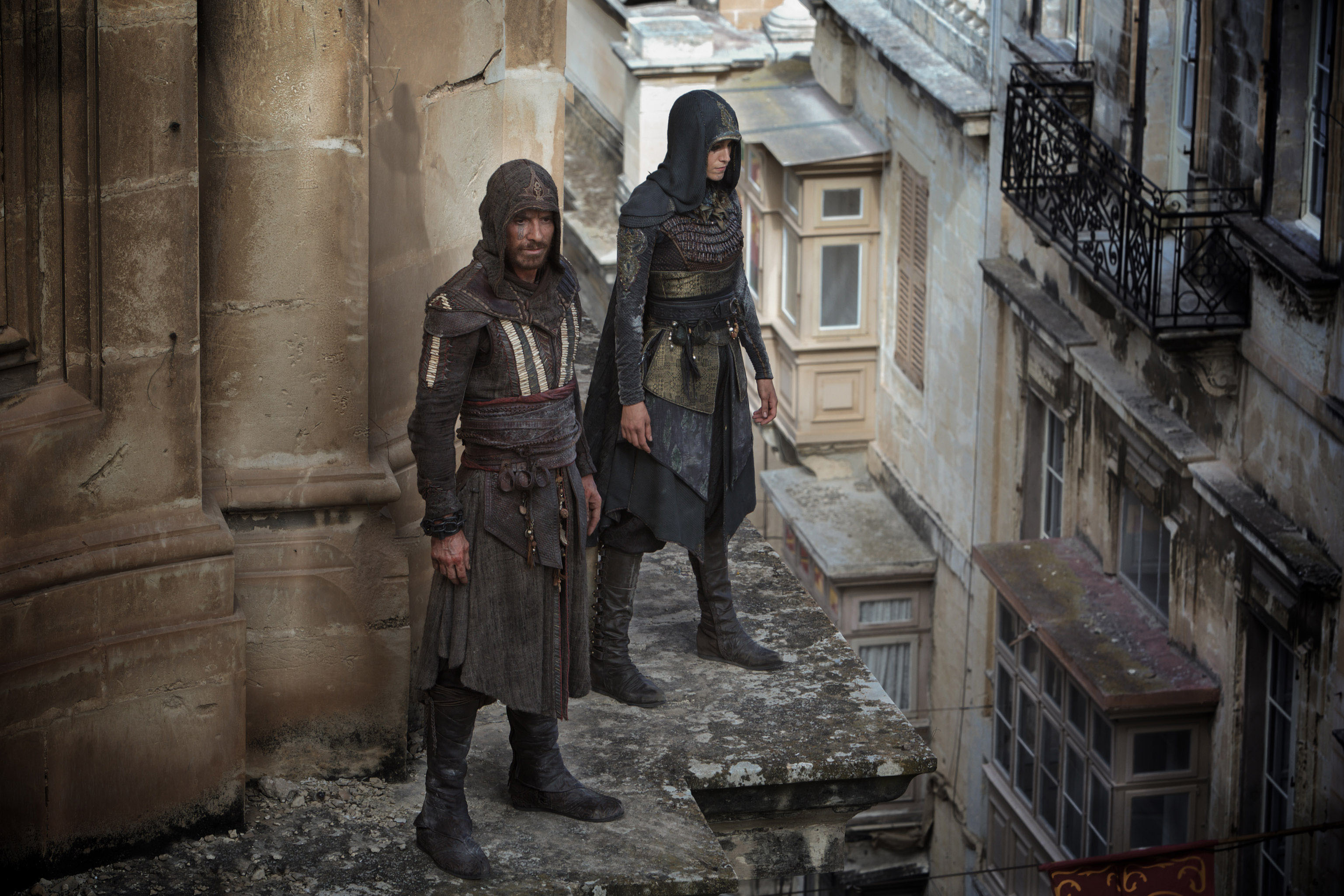
HULLFISH: To keep the audience engaged, I’m thinking that one of the things you had to do was to keep the link to the present day “alive” when you’re in these historical action flashbacks. Did that stuff get restructured a lot as you were cutting?
TELLEFSEN: There were certain things designated to come back to the present in his current virtual reality that was designed in conjunction with the choreography of the action.
HULLFISH: How hard was that stuff to cut? Because obviously, that’s a lot of special effects that have to be incorporated.
TELLEFSEN: There was limited pre-vis, I am not a fan of it. The pre-vis was most useful for the big moving shots involving the eagle, and the regressions moving through images of 15th century Spain. With the action sequences I cut a lot of raw footage to get the placement, and the rhythm, of the parallel action of the present and past, but then the effect within the animus, what is called “the bleeding effect”, was something that evolved greatly, we had to have the visual effects artists experiment a great deal until there was a look that we felt very strongly about.
HULLFISH: And did that evolution affect your editing? Affect the pacing?
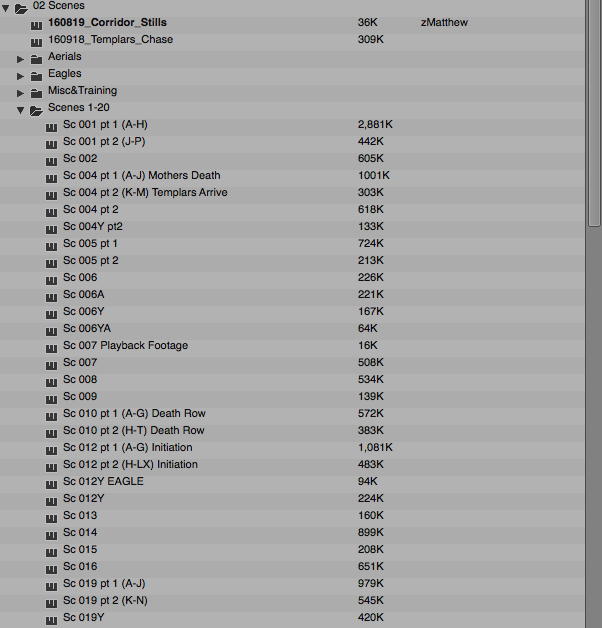
TELLEFSEN: A bit, here and there. Because sometimes it’s like, “Oh yeah, I’ve got to open that up some because it needs a little more air here or there.” The editing of the sequences helped guide their work.
HULLFISH: Then, sound design played a huge part.
TELLEFSEN: A huge part. We had wonderful sound people. Frank Kruse was our sound supervisor, and Markus Stemler, our sound designer, they’re based in Berlin. Our mixers, Steve Single and Gil Lake, and the dialogue editor, Steve Little were all British. They also worked with Justin Kurzel, the director, on Macbeth and they are really terrific. We had a great experience. Many interesting field recordings were done for the animus arm, they went to robotic studios and recorded some amazing stuff. I will be bringing them onto my next project which will be in Europe again.
HULLFISH: How did you collaborate with the sound team to say, “I need something to propel this cut.” What kind of collaboration was going on between you and the sound team?
TELLEFSEN: We had discussions about the feel of what we were looking for, and just wanted them to experiment and bring us wonderful fresh ideas, and they brought smorgasbords of interesting sounds and concepts, we just had an enormous amount of fun in the mix.
HULLFISH: Did those sound teams start to deliver little packets of cool stuff for you to use to start to get the feel before they do a mix?
TELLEFSEN: Oh yeah, sure. The first things sent were more basic to fill the needs, then they evolved into more sophisticated and complex combinations of sounds.
HULLFISH: Tell me a little bit about temp music. What did you temp with? What’s your attitude about temp?
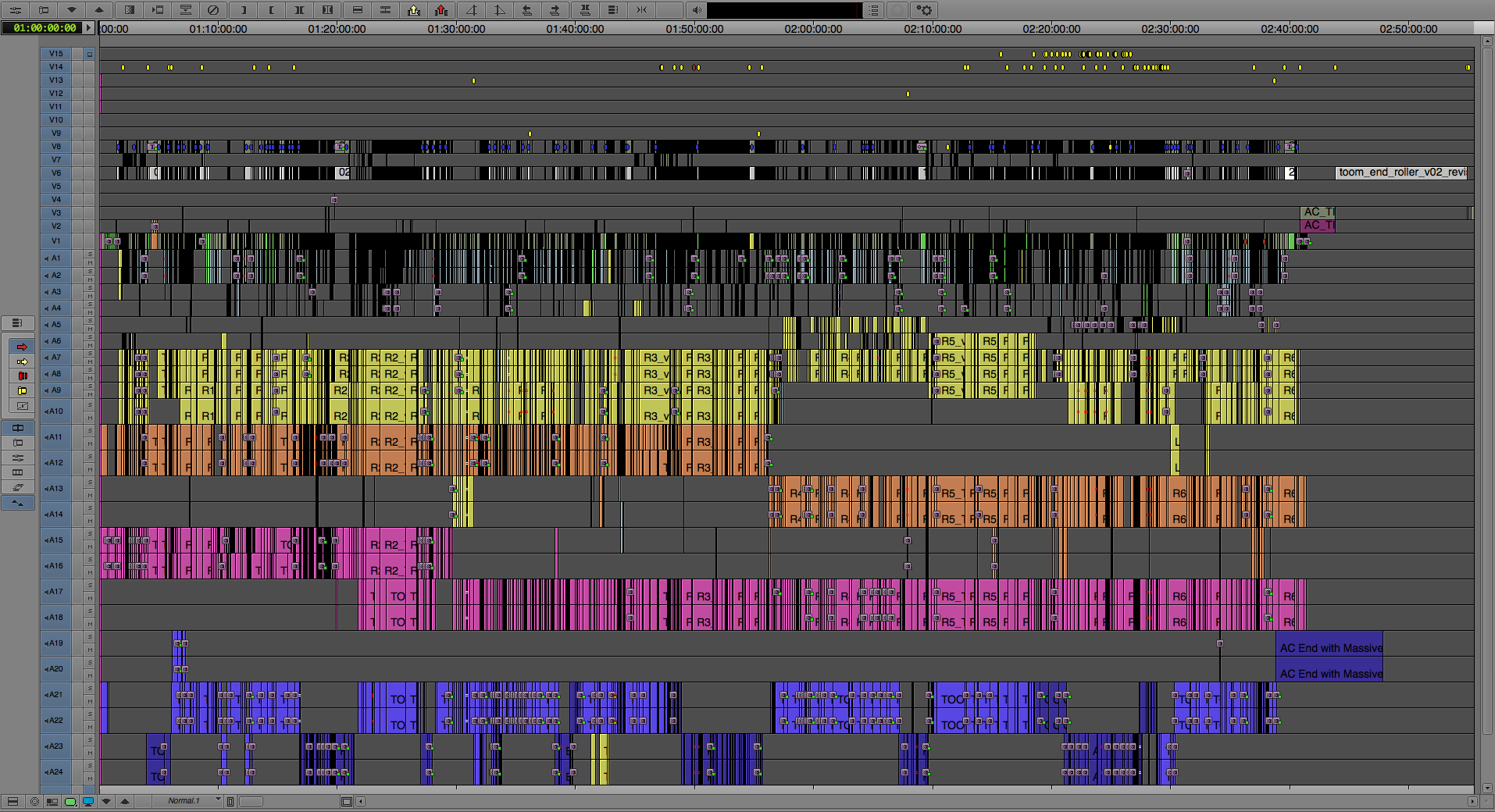
TELLEFSEN: With temp, I try to find the right attitude, whether I have a temp music editor or do it myself, the key is to try a broad base of options to see what sticks. We swapped out the temp about 6 months ago so it is a faded memory because Jed’s music was so strong. We used a lot from the movie “Prisoners,” the Jóhann Jóhannsson score, which is a lovely score.
HULLFISH: I’ve got that in my temp library as well, and I just talked to somebody else that just used tracks from that movie.
TELLEFSEN: It’s a beauty. It’s a very special one. But that didn’t really influence Jed. Jed Kurzel, who was our composer, was just dying to get that temp out of the way. We also used tracks from, Sicario and Mad Max for some of the action. Jed was anxious to not have the temp influence his work, I love what he did, we had no attachments to the temp. He’s working with Ridley Scott now on Alien.
HULLFISH: Pietro Scalia is editing that I think, right?
TELLEFSEN: He does most all of Ridley’s work.
HULLFISH: On IMDb, for a long time that movie was up it didn’t have an editor.
TELLEFSEN: He was probably negotiating.
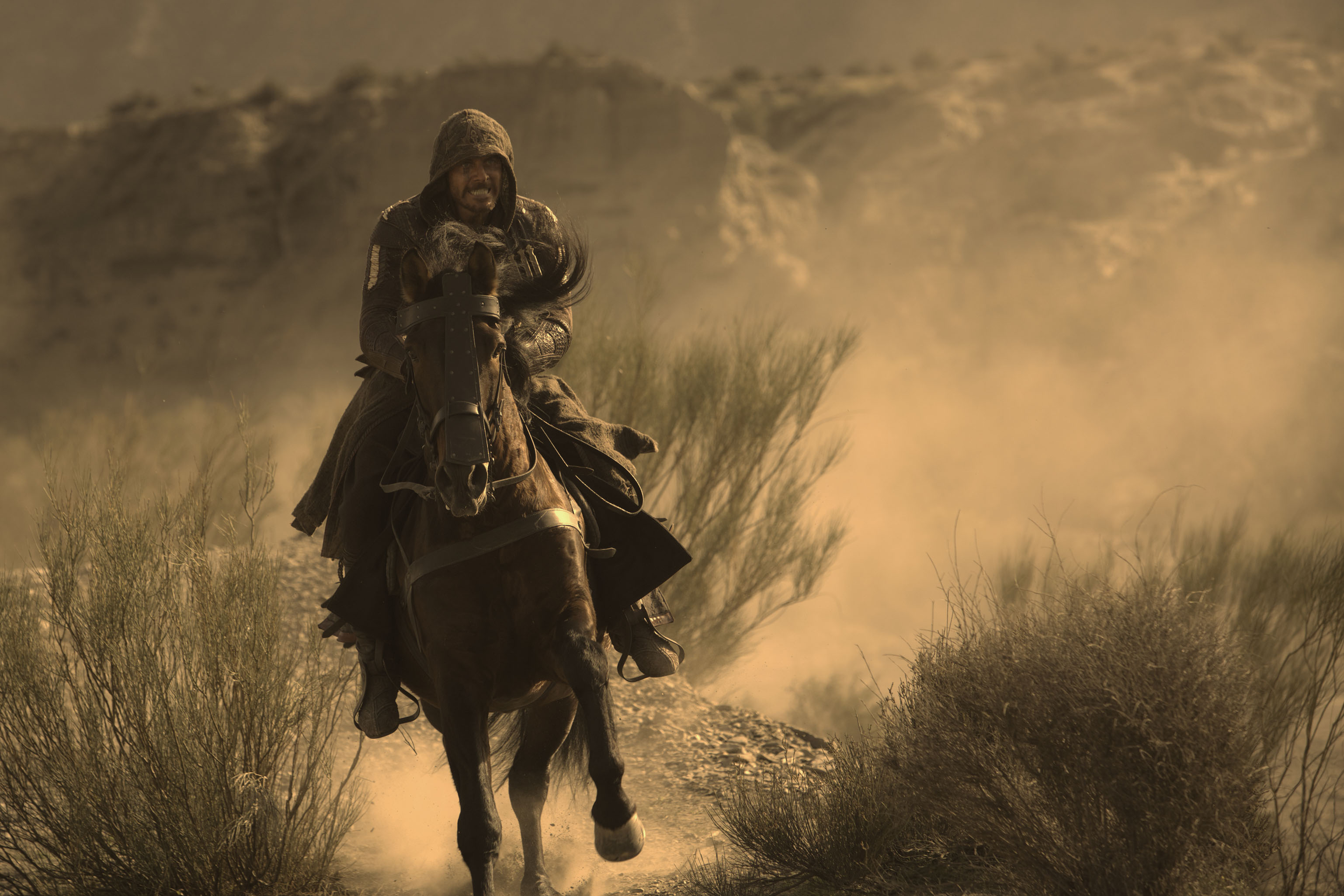
HULLFISH: There’re a number of places in the film where they’re speaking Spanish. Did you edit with captions in the movie?
TELLEFSEN: I had subtitles the whole time. Those scenes were also done in English but we felt that the English didn’t feel authentic. The Spanish just felt so much better, and the actors were stronger in Spanish, their native language.
HULLFISH: I loved it in Spanish.
TELLEFSEN: I thought it was important to do that, as Justin did too. And we won over the studio immediately. Mostly we tried to keep the Spanish dialogue to a minimum.
HULLFISH: One of those interesting things that I’ve talked to a number of people about is the weight that something achieves after it’s been shot.

TELLEFSEN: It’s much to do with the fact that scripts are almost always over-written, because they have to accommodate for people’s imaginations, and once you have shot something – if you’ve shot it well and if it’s alive – it says three times what the page says. It becomes a new thing. I have enormous respect for script writers. Especially for structure and character, these are things that if you don’t have in a script you suffer. A truism I’ve always found is that there’s always much more setup than you ever end up needing. Almost every film that I’ve done is really fat in the first act.
HULLFISH: There’s also the idea of hitting certain big story beat moments – usually people think of the act breaks. Was there a spot at the beginning of the film where you felt “I really need to get to this point.” For example, “I need to get to the animus.”
TELLEFSEN: Absolutely. That was a huge challenge.
HULLFISH: What was preventing you from getting to that point?
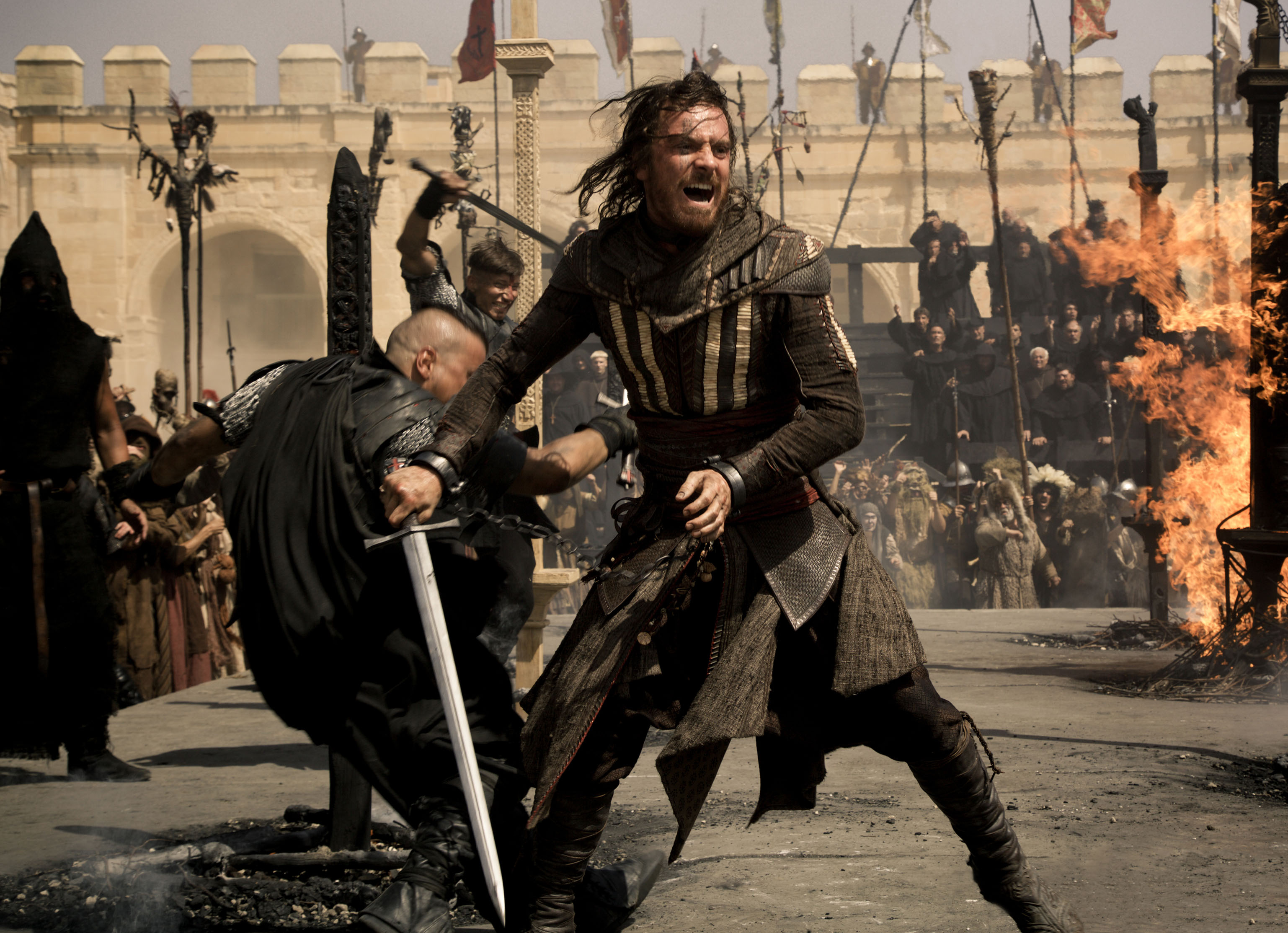
TELLEFSEN: There was simply too much, but key elements had to be grasped and not skated over. I had to pare down the set up to get to the thrust of where he is in the beginning. The initiation was brought forward as a pre-title sequence to contextualize the concept of the film. The back story of his mother’s death had to be boiled to an essence, and the mystery of what his father did, that there was a force they were running from. Then the boy is on his own. We couldn’t start the movie with a man on death row. We needed to show what happened to him as a child to create sympathy for the character. It was a matter of finding those rhythms, and with brevity, making them as concise as possible.
HULLFISH: Talk to me a little bit about intercutting. The Assassin is fighting in the past, and we have to see him fighting in the modern day, but there’s also storyline intercutting. Talk to me about jumping back and forth between storylines and how you get a sense of the need to change the intercutting from the way it was in the script.
TELLEFSEN: The big paralleling aspect was in the last act, coming out of the final regression, the regression being when he’s in the past. Juggling the finding of the apple, the assassin’s mutiny, his mother’s visitation and the paralleling of the fight to escape the animus as Sofia and Rikken are being carted off to safety in a helicopter, to obtain the apple at the Columbus tomb. That was a lot of delicate paralleling that I worked through many iterations to get that sense of propulsion and escalation.
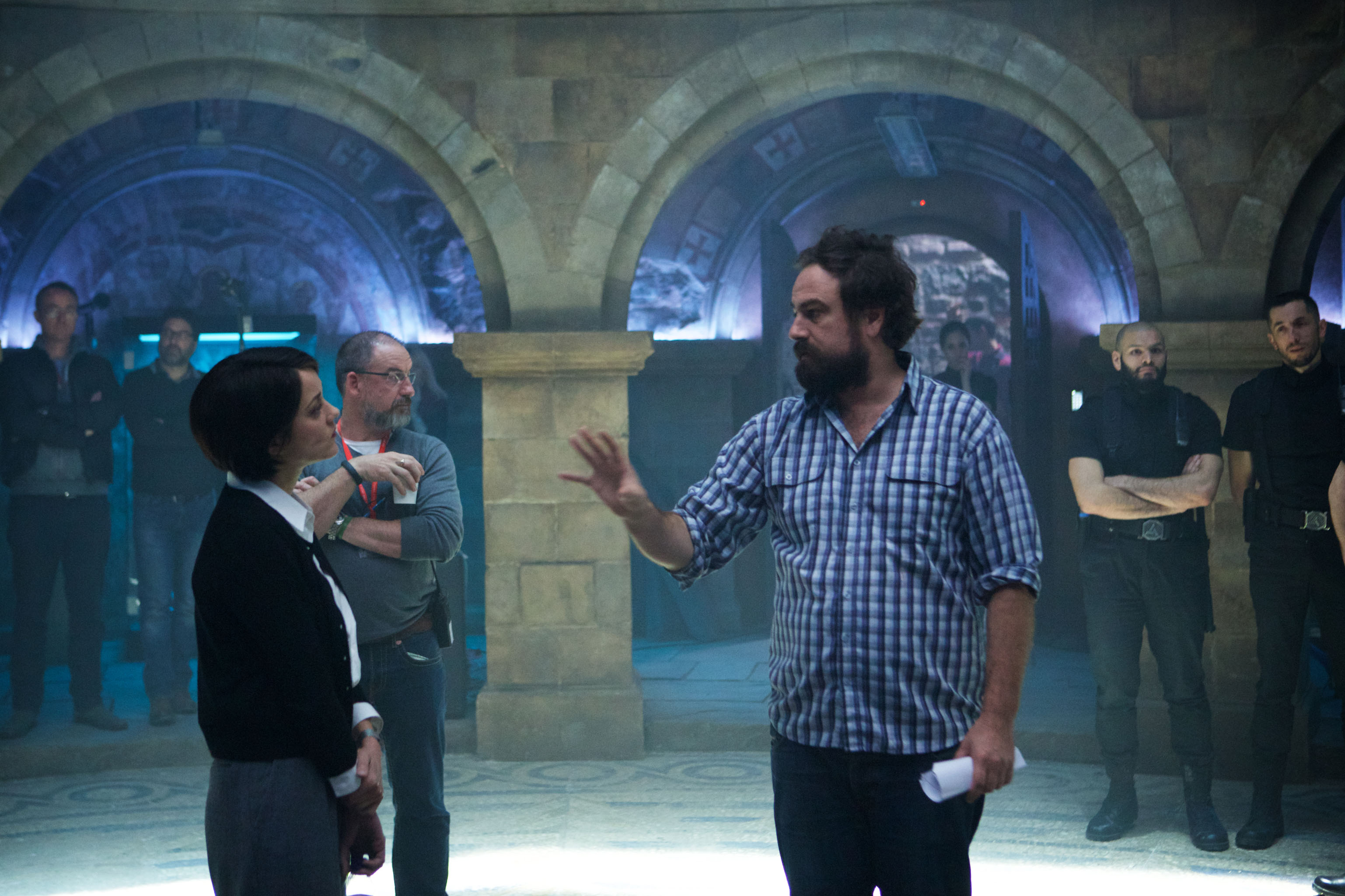
HULLFISH: What was your collaborative relationship with the director?
TELLEFSEN: Justin Kurzel is great. I just love Justin. We had a great experience working together and plan to do it again. He was the reason I wanted to do this film. I wanted to stretch and do something on a large scale with big visual effects, the fact that it was being directed by someone as interesting as Justin (The Snowtown Murders and Macbeth) made it intriguing to me. Justin is actually a big fan of Gummo and Kids. We were aesthetically connected and had like sensibilities. It was a difficult process and we were constantly grappling together and figuring things out. It was a struggle, but a fun struggle.
HULLFISH: It does have to be a process.
TELLEFSEN: It is a process!
HULLFISH: Describe why that process must occur. It can’t just appear in its final form.
TELLEFSEN: The beauty of shooting, the responsibility of a good director to make sure they got the performance and the essence of the story, the raw material to work from, knowing it has to be shaped and figured. It is a long wonderful process of discovery.
HULLFISH: There is a quote that is attributed to Martin Scorsese: “No movie is ever good as the dailies, or bad as the first cut.”
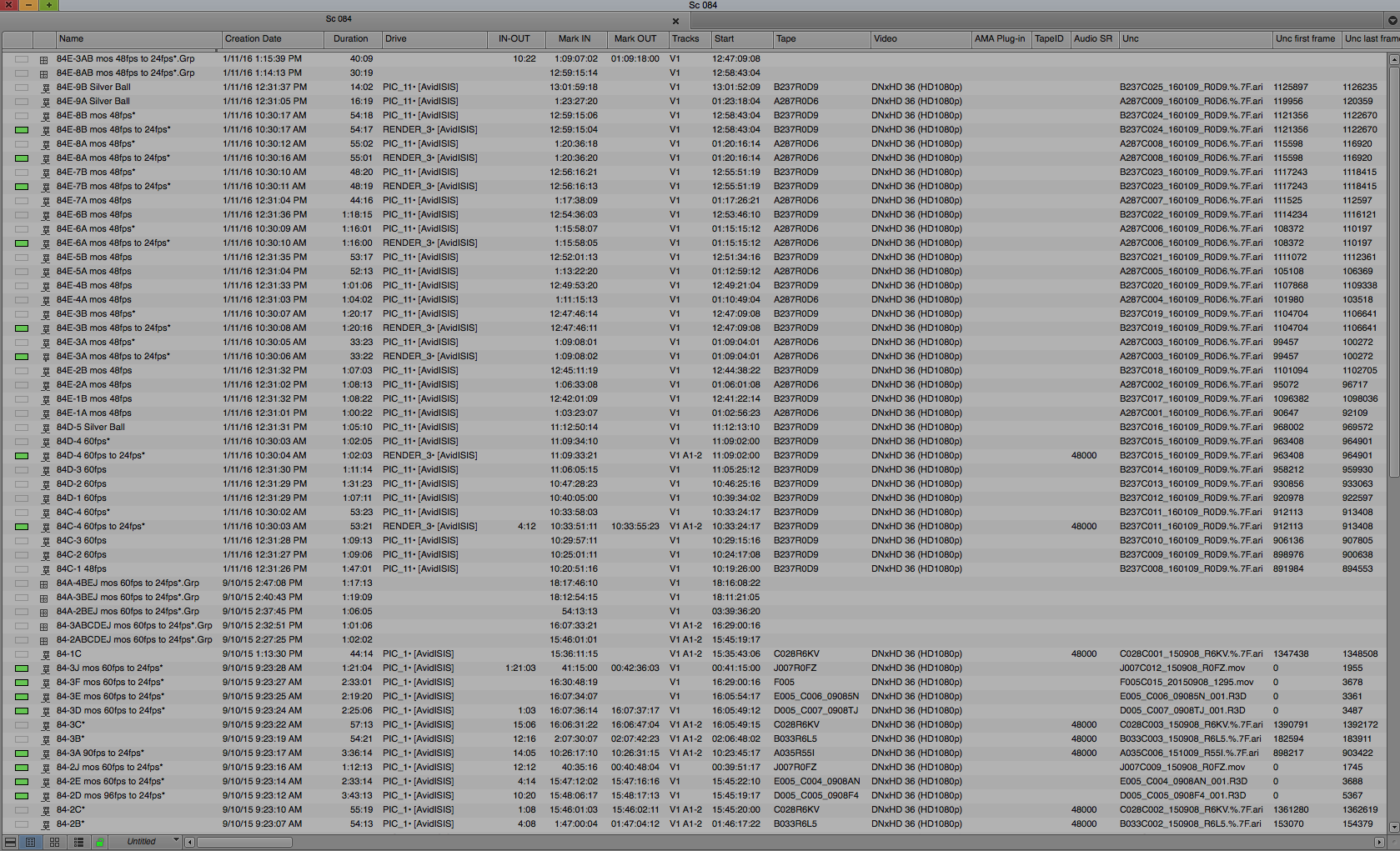
TELLEFSEN: That’s a good one because the dailies have enormous promise and the first cut is always awkward, it can’t not be. The first cut is essentially to script. It’s to script, and you’re looking at everything, warts and all. We’re going to look at three hours of something that is unformed. You edit it well, but it’s not got that essence of feeling it from beginning to end. I think of the first cut as an overview that is essential and important, because you’re never going to get to that end result without understanding the challenges and problems that you’re faced with upfront.
HULLFISH: Yeah. It’s a rough place to be, for me at least ego-wise, that you’ve got this cut of the scenes that you cut together well, but then you look at the movie and you’re like “wow, this is not really that watchable.”
TELLEFSEN: Yes! Exactly. But that’s the process. That’s what it is.
HULLFISH: It’s interesting.
TELLEFSEN: It’s so interesting, it never ever ceases to be interesting to me. And people say “Oh how can you look at things over and over again?” But I’m not looking at things over and over again. I’m looking at a new thing, every iteration.
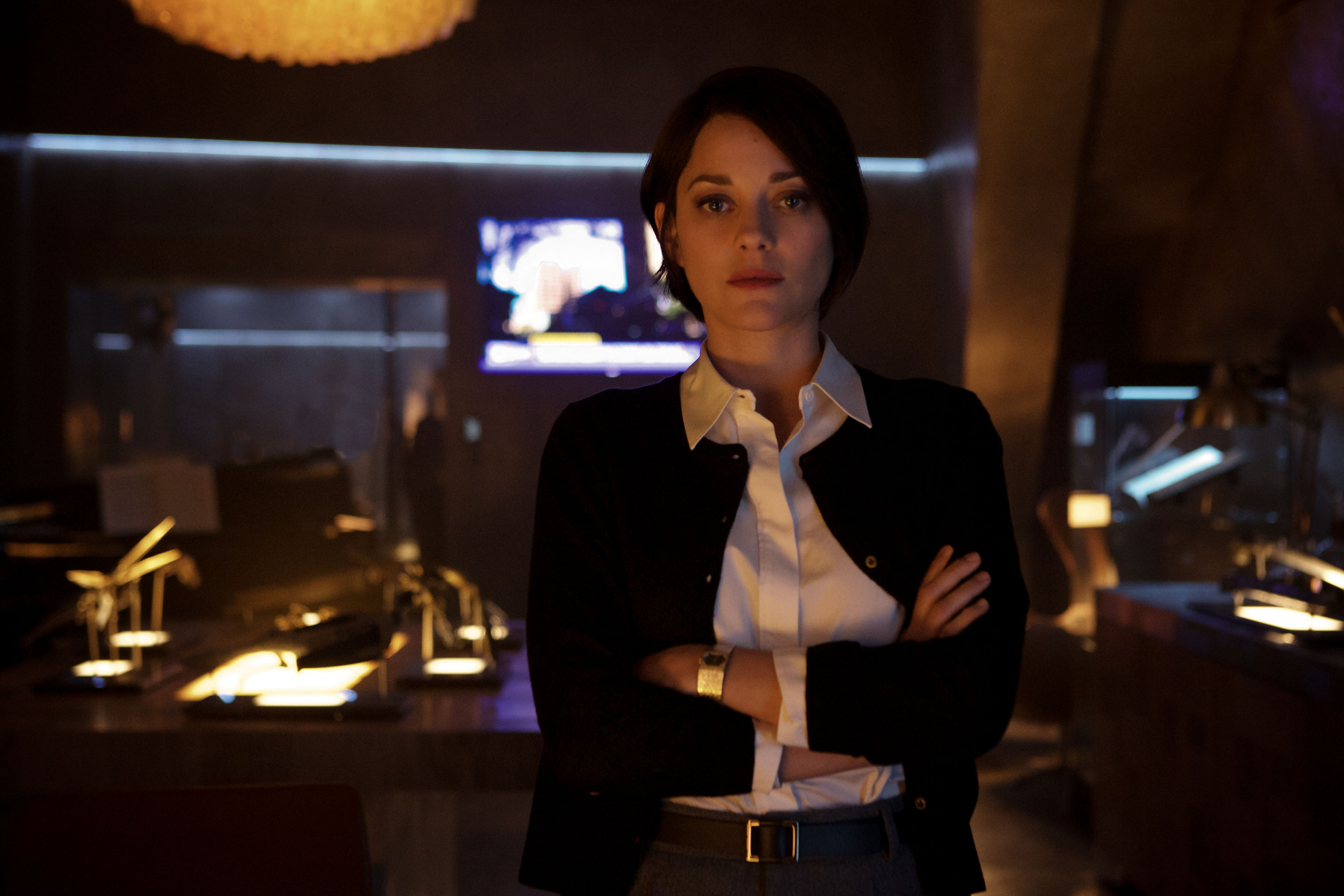
HULLFISH: Yeah, that is an interesting way to put it. For about five years I was cutting at home and my family would say, “How can you listen to the same thing over and over again.” But, it’s always actually slightly different or else you wouldn’t be listening to it.
TELLEFSEN: You’re finding that shift. It’s the key to what we do. That’s the key.
HULLFISH: Another quote from many editors is “patience is a real virtue of an editor.”
TELLEFSEN: I think without it, you couldn’t do it.
HULLFISH: Are there other virtues or characteristics that are beyond artistic ability that you find that you need to be a good editor?
TELLEFSEN: I think you need to have a real sense of character and story. You need to have a sensitivity to dynamics between characters. You have to be able to figure how shifting the rhythm of something brings two people together better or connects things. And also being honest and not lying about something. To be able to say “this isn’t working” or “this desperately needs this or that.”
HULLFISH: Honesty is also about just being able to spot an honest performance.
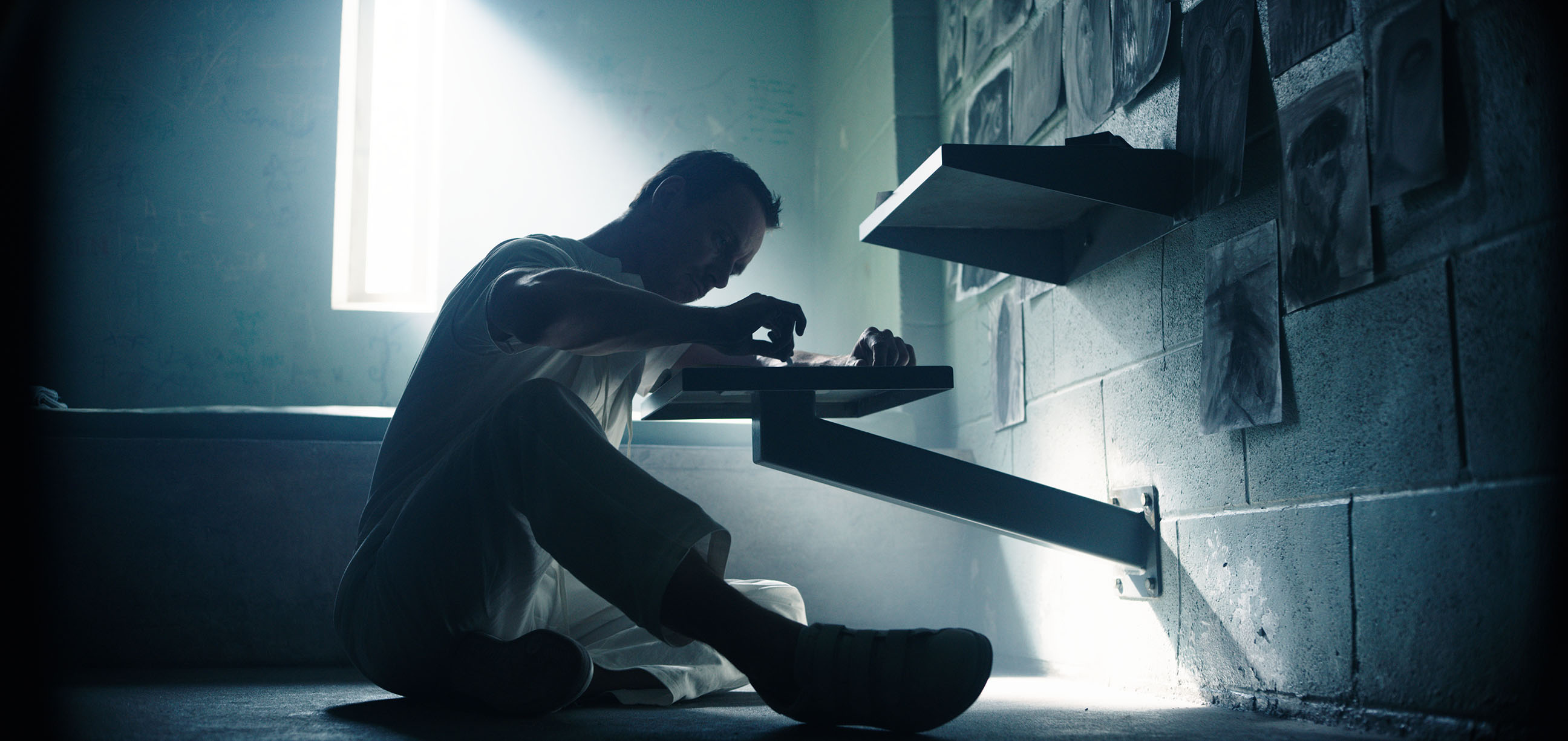
TELLEFSEN: Yes! Authenticity. Having a true sensitivity to performance and also recognizing when a performance fails and requires extreme help.
HULLFISH: You talk about the dynamics between characters and that can really be affected by pacing. I interviewed Tom McArdle on Spotlight and he said that with the Marty Baron character, he said that he always put pauses or spaces before he spoke, but everybody else talked rapid-fire. They used that to make him seem contemplative, but also to set him apart as an outsider that is different from the rest of the group.
TELLEFSEN: That’s an interesting thing. I’m trying to think of other instances where something of that nature was done.
HULLFISH: Another example of it from people that I talked to was a speed up. Sidney Wolinsky, who cuts Boardwalk Empire, said that they always made Steve Buscemi’s character speak very quickly to show how smart he was and how quick witted he was — that he always had an answer immediately.
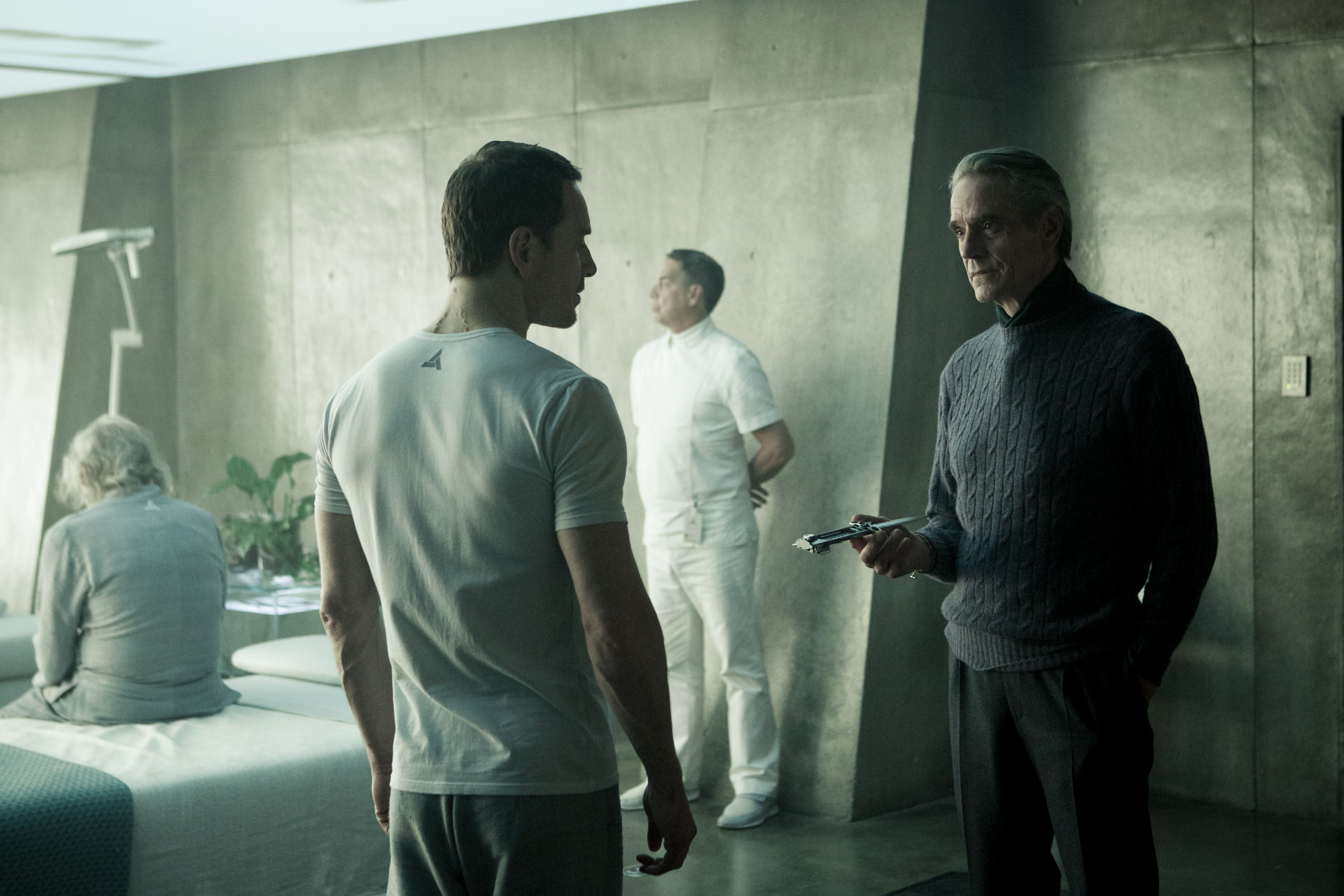
TELLEFSEN: That’s being sensitive to the character and the performance.
HULLFISH: The dynamics between characters…
TELLEFSEN: That’s something within every film I’ve tried to mine that. Do I do it overtly, consciously? No. It’s more intuitive. You live with it and you figure the rhythm of the characters.
HULLFISH: And the lead character in Assassin’s Creed at the beginning, for example, I was thinking about him trying to figure out where he is, where he is confused and doesn’t quite get it. And he’s trying to understand the dynamics of where he is and how he fits into it. I would think that the timing…
TELLEFSEN: That was an essence too. An aspect of it is they’re a step ahead of him and that he is a step behind them.
HULLFISH: That plays into the dynamics of his character and how he related to Sophia. So is there anything you can explain the dynamics between Sophia and either her father or the assassin?
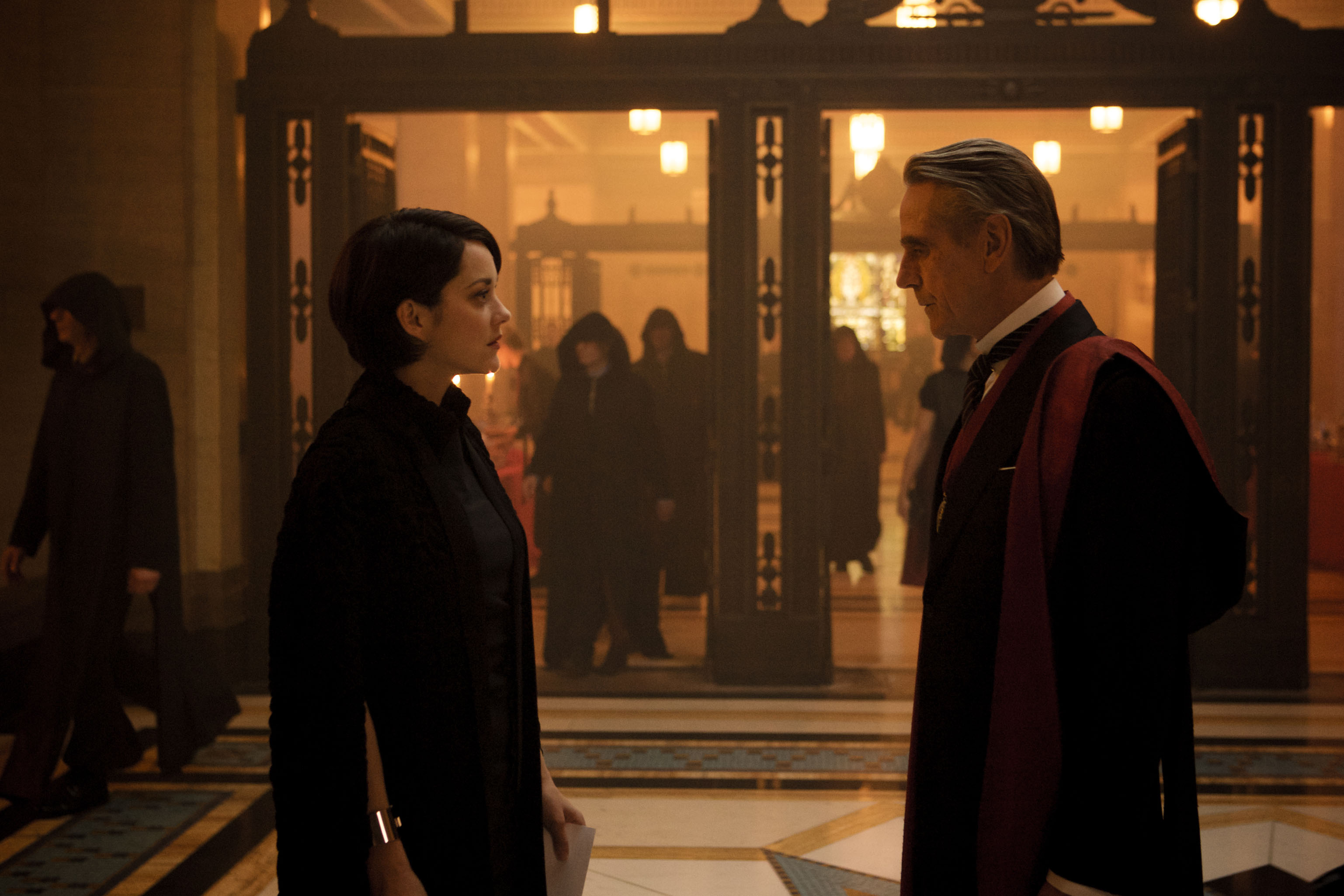
TELLEFSEN: We tended to work with their relationship, Sofia, and Cal with the certain kind of awkwardness in terms of what she was wanting from him and his resistance coming down. Then the aspect of how there had to be a difference for each way he went into the animus. At first, he is absolutely thrust in. Then the second time, he is hysterical, but almost throws himself in. Then finally, he makes the choice to go in. To go against his father who he still felt was responsible for his mother’s death. A lot of attention went into the father-daughter relationship, Sofia and Rikken, he appears to be supporting her in the beginning but slowly it is revealed that he means to exploit her and use her to gain power. Her realization of his betrayal of her is the key shift at the end when she doesn’t come to his aid early enough to save him from being executed. Then her guilt powers her understanding that she needs to lead now.
HULLFISH: How do you watch dailies? Everybody has a different technique.
TELLEFSEN: I try to watch dailies in the old school way. I try very hard to get a screening room if I can or the very biggest screen I can. God, when was the last time I really sat down to dailies? It might have been The Village with Night. We had formal dailies on that and everything was on film.
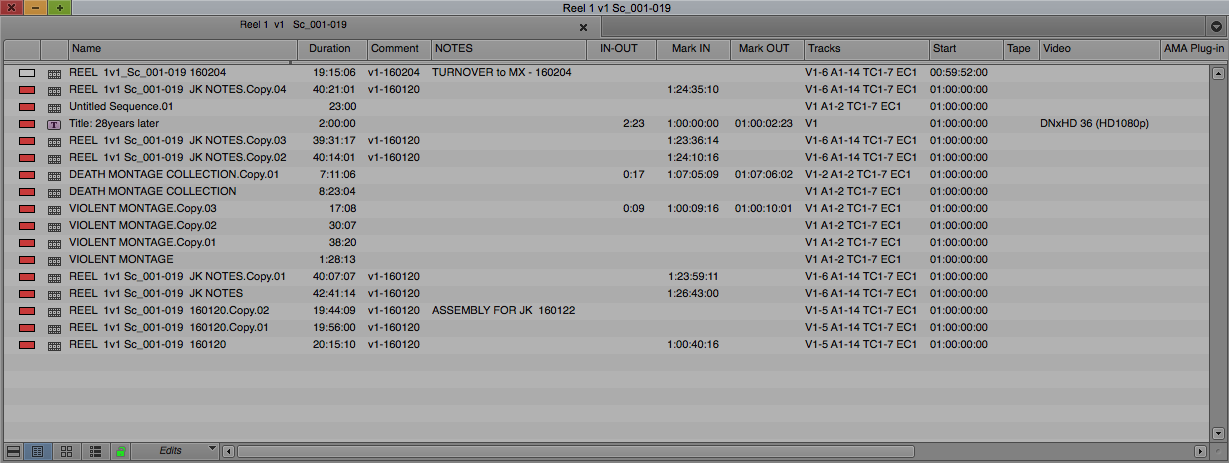
HULLFISH: You sitting with the director.
TELLEFSEN: Yes, and we talked about it as we saw.
HULLFISH: Don’t you miss that?
TELLEFSEN: That is no longer. People watch dailies on computers, and I can’t do that. My responsibility is to look at everything on as large a screen as I can, to fully absorb what has been captured, and to discover the little elements that I want to draw back to, like a gesture, a look on a face, a twitch, and all the subtleties that the actors are giving.
HULLFISH: And how actively are you doing that? Are you doing that with locaters? With written notes? With sub-clipping? You emailed me that there were 486 hours of footage for this movie.
TELLEFSEN: It starts with written notes and then when I’m going about a scene, I’ll do locators, especially for character aspects in a performance, like the little ticks and what’s making this character this character, what’s essential, the texture.
HULLFISH: On Nocturnal Animals and Arrival, both of those editors talked about those the amazing little micro expressions that Amy Adams does.
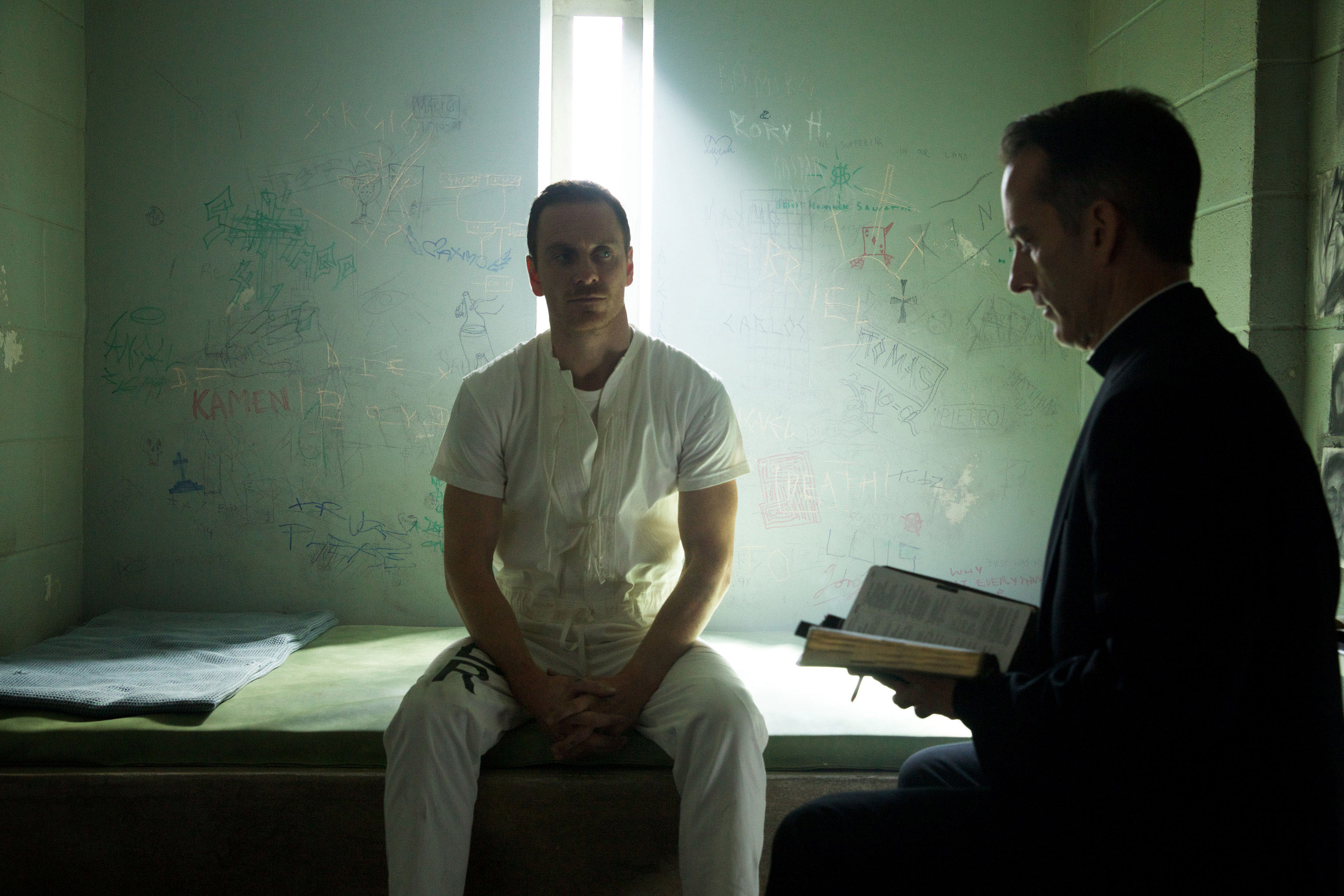
TELLEFSEN: Oh yeah, she’s lovely, she’s a lovely actress. I’ve never worked with her, I would love to. Working on Capote, with Phillip Seymour Hoffman’s performance, it was a constant culling for the little facial tics. He would do really interesting things, almost like one eye would go wall-eyed a little sometimes and little pursing of the lips and there were also aspects of how he held himself physically. Certain shots he didn’t look quite right. We had to be careful about how he was presented to really feel that character up and down.
HULLFISH: Right, because you’re doing anything you can to give the audience a sense of what’s going on in their head.
TELLEFSEN: Yes, and also that’s a situation in that film where you’re talking about artistic process, the process of writing and getting that feeling of creativity, of thoughts, emerging, that was an interesting challenge.
HULLFISH: So after watching dailies, what is your approach to a scene? Some people go right from the dailies in the bin. Are you now editing on Avid I assume, instead of HeavyWorks?
TELLEFSEN: I’ve been editing on Avid forever, I only did HeavyWorks when I worked with Milos. But yeah, I go right from my dailies. Then after looking at them and feeling them, I go right into the scene.
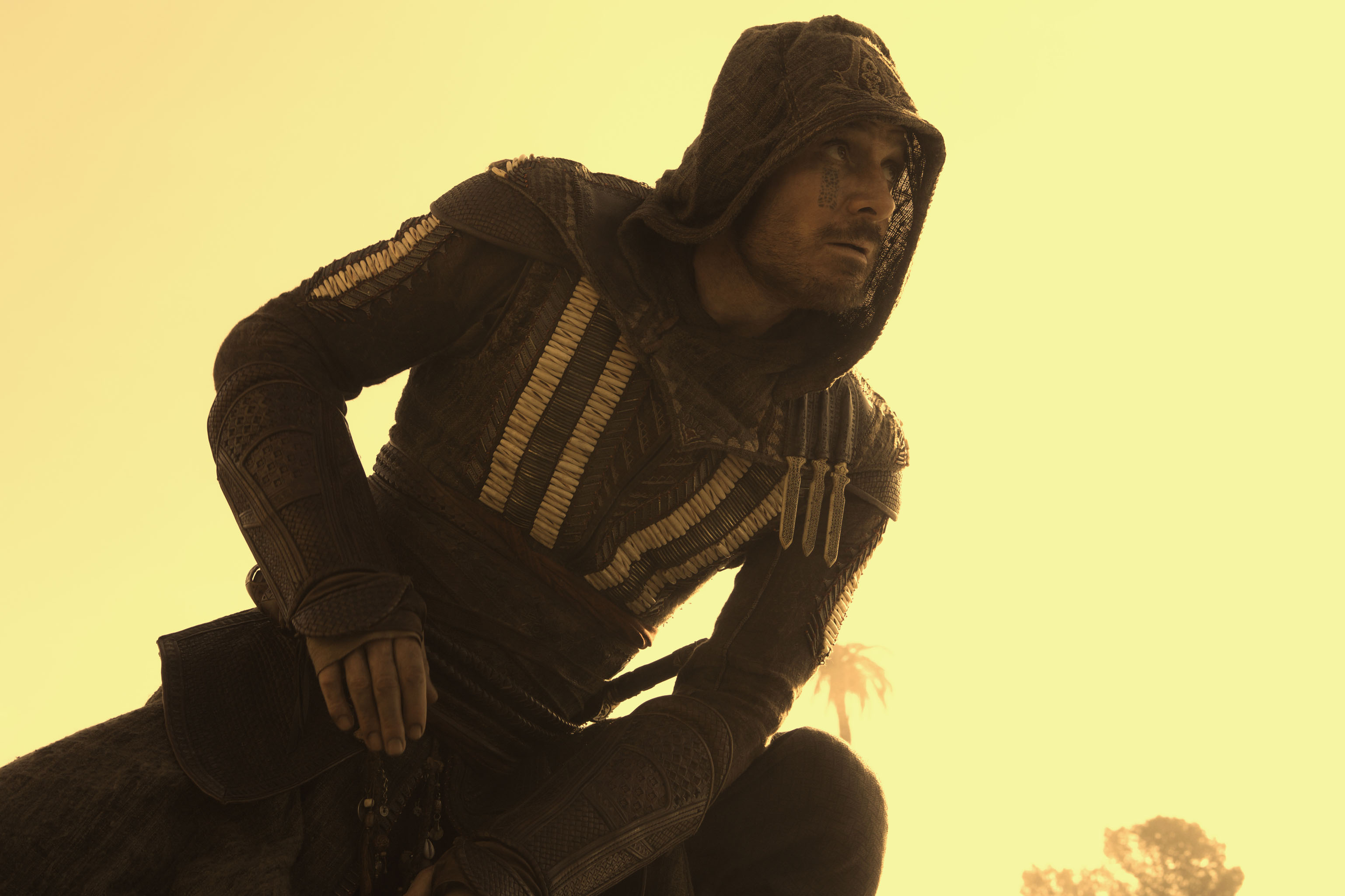
HULLFISH: Using Frame view in a bin or do you use selects reels or a KEM roll?
TELLEFSEN: Using frame view I go right into the bin and I refer to my notes because I’ll flag up things that I want to go to. There’s the rhythm of dailies that goes with the rhythm of shooting. I like to be a little bit ahead of the shoot so I understand the scenes day to day, I’ll do what I call a “Knee Jerk” cut, which is just reacting to it, not over working it to start with, to get something together that I feel strongly about and trying to figure out the shape of the scene. I try to get a reactive cut, something I feel good about and move on.
HULLFISH: In this reactive cut are you just trying to execute the idea in the script… to get it off of the page? Or are you contemplating the essence of the scene – the objective of the scene?
TELLEFSEN: I am always trying to figure out what the essence of the scene is. It’s not just it starts here and it ends there, no. When I say reactive, I mean reactive like not overworking it. I don’t mean doing it in a dull “1, 2, 3 way.” I’m mean to be as reactive as possible without over-thinking and over-questioning it.
HULLFISH: So you get something that you can then start to consider.
TELLEFSEN: Yeah, something watchable that has a feel.

HULLFISH: With these reactive cuts, a lot of times editors will go to the circled take and cut something together so they get the rhythms and the sizes of shots that they want and then they go back in later to finesse the specific takes that work best.
TELLEFSEN: Oh well, I always go back. I’m just talking about the very first go round and of course during dailies, when other things come in it’s, ”Oh, this is going to react to that” and then it’s, “Oh, this is happening with the performance. I have to go back and recheck.” I’m always going back. I was just explaining how I just first hit a scene, just hit it.
HULLFISH: Many people say the same thing: that you want to capture that first impression.
TELLEFSEN: Yes. Very much so. And sometimes that is essentially what it ends up being. Sometimes.
HULLFISH: How quickly do you try to assemble scenes, one to the other?
TELLEFSEN: Oh, as soon as possible. ASAP.
HULLFISH: I’ve put together seventy of these interviews and there’s definitely dissent in that opinion.
TELLEFSEN: Well, that’s interesting.
HULLFISH: About half of the editors put scenes into longer sequences as quickly as possible and half hold off on doing that as long as possible.
TELLEFSEN: I do the former, but that’s an interesting divide.
HULLFISH: That’s one of the things that I love about these interviews. It reveals so many similarities between approaches and it reveals so many differences.
TELLEFSEN: Well, yeah, you give a pile of footage to five different people, you’ll get five different scenes.
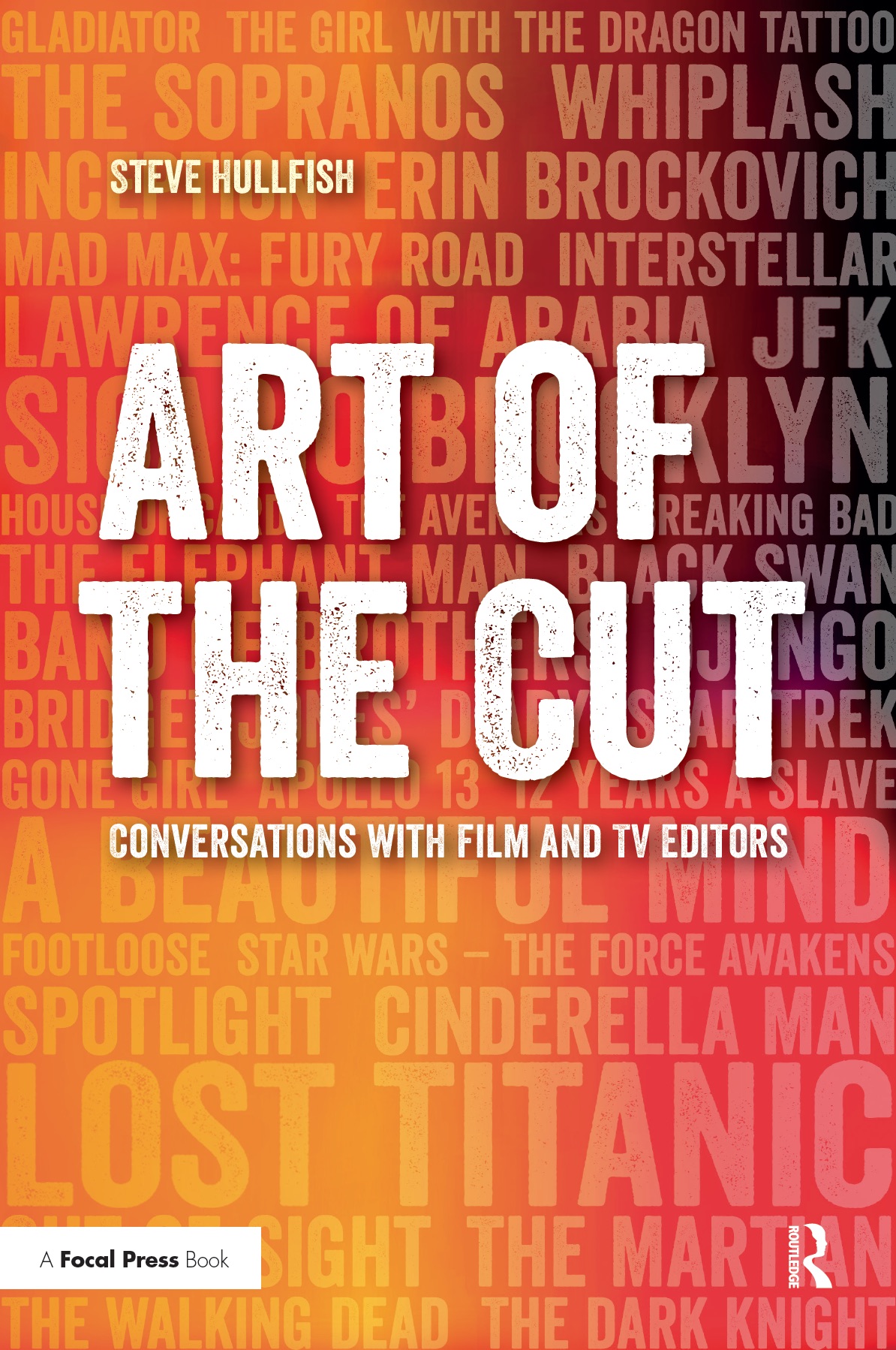
To read more interviews in the Art of the Cut series, check out THIS LINK and follow me on Twitter @stevehullfish
The first 50 interviews in the Art of the Cut series have been curated into a book, due out March 10th and available for pre-order now on Amazon.
Art of the Cut provides an unprecedented look at the art and technique of contemporary film and television editing. It is a fascinating “virtual roundtable discussion” with more than 50 of the top editors from around the globe. Included in the discussion are the winners of more than a dozen Oscars for Best Editing and the nominees of more than 40, plus numerous Emmy winners and nominees. Together they have over a thousand years of editing experience and have edited more than a thousand movies and TV shows.

Filmtools
Filmmakers go-to destination for pre-production, production & post production equipment!
Shop Now